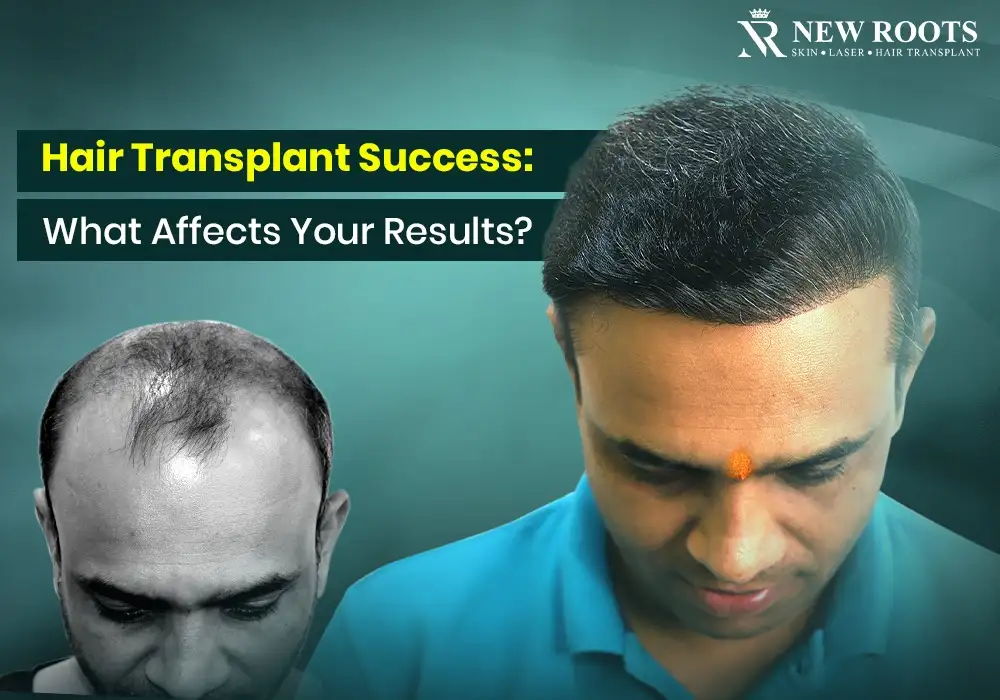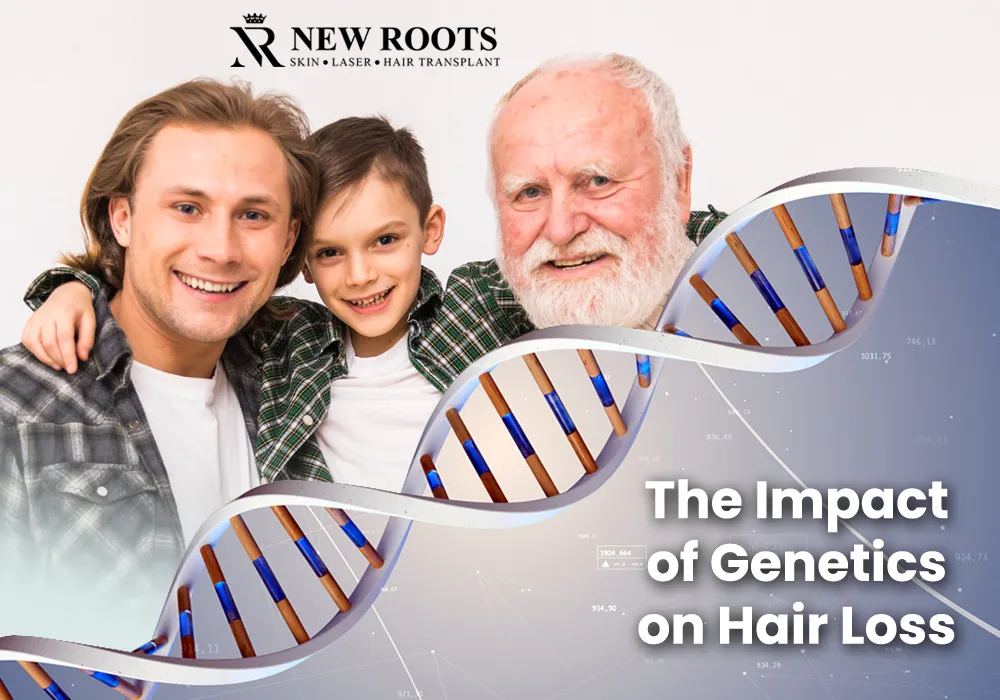Introduction
Hair transplant success stories are a big testimony to the noteworthy advancements that have been made in hair restoration engineering. Super accurate surgical techniques and top notch technology have promised dramatic hair restoration results.
Excellent hair density, a head full of thick hair, and a natural-looking outcome – these are the highlights of a successful hair transplant procedure. So in this article let’s talk about success rate of hair transplant.
Table of Contents
High Success Rates, Beautiful Results: Explore the effectiveness of Hair Transplants
A hair transplant comprises of extracting and transplanting hair follicles from the donor site to the bald areas of the scalp. It most certainly promises you a mega transformative solution if you’ve been grappling with hair loss.
Your trichologist will provide meticulous attention to detail and plan a bespoke approach so that your requirements and hair goals are met with brilliant results!
Understanding A Successful Hair Transplant
A successful hair transplant is more than just a surgical procedure; it is a transformative journey towards looking young and gorgeous and boosting your self-esteem and confidence!
Hair loss and balding are extremely common, and a large section of those suffering from it seek hair transplant surgery not only for the cosmetic advantages but also for the deep impact it has on one’s personal and social well-being.
To understand why hair transplant success rates are so impressive, you need to comprehend the procedure, the parameters for success, and its broader implications.
An Introduction to Hair Transplant Surgery
Hair transplantation is a surgical procedure that effectively treats hair loss and balding by extracting and relocating hair follicles from the donor area to the bald site.
2 chief techniques are used in hair transplants – the Follicular Unit Transplantation (FUT) and the Follicular Unit Extraction (FUE).
The FUT consists of extracting a strip of the scalp from the donor site, generally at the back of the scalp, and sectioning it into small units implanted into the recipient site.
The FUE involves excising individual hair follicles from the donor site, relocating and implanting them in the bald patches. Both hair transplant techniques restore the natural hairline and boost hair volume, although they vary in technique.
What makes a hair transplant successful?
The success of a hair transplant depends heavily on a host of factors and considerations related to the surgery and your health and condition.
Here are the chief elements that greatly contribute to a successful hair transplant.
Experienced Surgeon:
The surgeon's experience and skill are extremely important. An expert will effectively design your hair transplant, select the best donor follicles, and carry out the most accurate placement of the grafts so that you have natural-looking flawless results.
The correct Diagnosis:
It is crucial to diagnose the correct type of hair loss. Male and female pattern balding are best treated with hair transplants, while other causes of hair loss—medical conditions or drug side effects—must be dealt with first. The stages of hair loss and balding need to be ascertained, too.
Healthy, sufficient Donor Area:
The success of your hair transplant depends heavily on the health and sufficiency of the donor's hair. A healthy and ample donor area will provide high-quality follicles for the procedure, thus ensuring good, successful results.
Trailblazing Techniques:
New, cutting-edge techniques such as Follicular Unit Extraction (FUE) and Follicular Unit Transplantation (FUT) optimize and maximize results. Your doctor’s selection of the technique will greatly impact the outcome of the surgery.
Post-Operative Care:
It is vital to strictly adhere to your doctor’s post-op instructions and mandates. You must take the prescribed drugs, avoid strenuous activities, and follow the prescribed hair care routines to encourage healing and follicle growth.
Genetics
your genetics too has a big bearing on how well the grafts grow. Those who have a strong family history of hair loss and balding have different outcomes as compared to people without a history.
Your Overall Health and Lifestyle:
your general health and lifestyle factors, like – your diet, smoking, alcohol consumption, exercise routine and stress – all these influence your hair growth. Maintaining a healthy lifestyle boosts your healing process and promises you a successful hair transplant.
Realistic Expectations:
you must understand that hair growth will take time, and you need to be patient and have realistic expectations about the outcome of the surgery. It will take you 9-12 months to have a head full of hair.
Condition of the scalp:
The condition of the scalp has a part to play a role in the success of the transplant. A healthy, well-prepared scalp will facilitate good follicle integration, better implantation and healthy growth.
Parameters to gauge the success rate of a hair transplant
To assess the success of a hair transplant, there are certain key parameters which need to be evaluated –
Hair Growth and Hair Volume:
the increase in hair volume and hair density and the scalp area that’s covered with grafts a significant elements in assessing the success of the procedure. Hair transplants that are successful characteristically show a massive improvement in the number as well as thickness of hair strands.
Natural Appearance:
how natural your surgery looks is another major barometer to assess the success of the hair transplant. Your new hair ought to blend in flawlessly with the existing hair, and the results should be realistic and visually appealing.
The satisfaction quotient:
which measures the individual’s satisfaction, approval, and delight with the procedure's outcome, speaks volumes about its success. The goal is most certainly accomplished if the individual loves how their appearance has dramatically transformed and is seeing an increase in self-confidence.
Survival Rate of Transplanted Follicles:
The most crucial criterion for gauging the outcome of the surgery is the number of grafts that survive and thrive at the recipient site. A good hair follicle survival rate is indicative of a successful procedure.
Scar Quality:
Another crucial factor is checking the visibility of the scar. A small, well-concealed scar indicates fantastic success.
The Recovery Timeline:
A review of your healing process and recovery time will tell you how effective the process has been. If the procedure has been a success, it will typically involve negligible complications, and you will have a very smooth recovery timeline.
All these parameters will help establish the success of the hair transplant.
The psychological benefits of a hair transplant – Success at its best!
The benefits of having a hair transplant go way beyond just the physical transformation. All the people who’ve had the procedure will see a big boost in self-confidence and self-esteem and will experience an improved quality of life.
Gaining a full head of hair causes you to have greater self-esteem and changes how you look and feel about yourself.
Success Beyond Aesthetics
For most individuals, hair loss is not only a cosmetic concern; it is the chief cause of emotional distress, feelings of worthlessness, and a complete lack of self-confidence.
A successful hair transplant will deeply influence your quality of life, restore your self-image, make you feel beautiful, and boost your social interactions.
When you feel more confident about how you look, your personal, professional, and social life will flourish, and you will be more willing to engage in various interactive activities, leading to a fulfilling life.
FAQs
A hair transplant is a surgical hair restoration procedure wherein hair follicles are extracted from the donor site, which is usually the back of the scalp, and it is implanted in to the bald area (the recipient site to help restore hair growth.
The definition of a successful hair transplant is more than just the technical aspect of the surgery. The success depends on a combination of – expert execution of the surgery, careful patient management, adherence to the mandates laid down by the doctor, and the deep emotional impact it has on the person. A hair transplant can significantly enhance not only the cosmetic outcome but also the overall quality of life for people who are experiencing hair loss. The hair transplant journey helps you reclaim your lost self-esteem as well as embrace a new you!
A person who is suffering from extreme hair loss that isn’t responding to other hair restoration treatments is eligible for a hair transplant surgery. However, he must have adequate amounts of donor hair for the procedure. Also, the hair loss should have stabilized, he shouldn’t be having any medical condition and ought to have realistic expectations. Discuss with your trichologist, he will be the best judge for your specific condition.
There are two main techniques for hair restoration – Follicular Unit Transplantation and Follicular Unit Extraction.
Follicular Unit Transplantation comprises of excising a portion of the scalp, whilst the FUE consists of excising individual hair follicles. The grafts are then transplanted in to the bald areas where hair regrowth will occur.
The duration of the hair transplant typically is about 4 to 8 hours. It depends on the extent of hair loss that you are facing, the bald area to be covered, and the number of grafts you need
You will be administered local anesthesia before the procedure, and as a result, you will experience minimal discomfort and pain during the procedure. After the surgery, you will be prescribed pain medications to help deal with the pain and discomfort. The pain will disappear in about 7 to 10 days.
The initial recovery phase of the hair transplant is about 7 to 10 days. By and large, you can resume your usual activities in approximately 2 weeks. In about 4 to 6 months, you will see visible improvement. And in about 1 year, you will have a head full of hair.
You will experience mild side effects immediately after the procedure, these are – redness and swelling of the scalp and face and minor bleeding. These resolve in a week’s time. Rare complications that have been observed are – infection, scarring and poor survival of the grafts.
Healthy, beautiful hair requires a multi pronged hair care regimen – this usually comprises of a good, nutritious diet, using the best hair care products and making lifestyle modifications.
What you eat strongly influences the health of your hair. When the diet is lacking in all the vital nutrients, it becomes evident through the health of your hair. You will notice hair thinning, straggly-looking hair, profuse hair fall, and stunted hair growth.
Contrariwise, if you consume a wholesome diet packed with all the right foods and which is free from refined foods, your hair will look healthy and gorgeous!
Success rates are high, with most patients experiencing significant hair growth if they follow post-operative care instructions. Success depends on factors such as the skill of the surgeon and the patient’s hair type.
Yes, when performed by an experienced surgeon, transplanted hair typically look natural and blends well with existing hair, giving you a very seamless result.
Androgens play a critical role in the health of your hair. The receptors respond to the hormone DHT and that will decide whether you will experience hair loss or not.
Hair follicles respond differently to androgens. Elevated levels of hormone DHT are associated with male pattern baldness. DHT binds to the receptors during the resting phase of the hair growth cycle. Consequently, the hair follicles begin to shrink and shrivel up and the hair gets miniaturized and loosens from the scalp. The follicle shrinks so much that it becomes completely inactive. This is when extensive hair loss and balding ensues.
Technology, techniques and innovation have made remarkable advances in the hair transplant landscape! The Follicular Unit Transplantation (FUT) and the Follicular Unit Extraction (FUE) both promise you excellent hair restoration and assure you completely natural outcomes. A hair transplant can be incredibly life-changing! It makes you look years younger and it augments your self- confidence appreciably.
When having to decide between the FUE and the FUT, make sure that you opt for the procedure that will be absolutely perfect for you. Confer everything about both procedures with your trichologist, scan patient testimonials, and discuss with other people who have had hair transplant surgery. Choosing the right hair transplant technique is a little challenging. There are several factors for you to take into account before you decide on a technique. Enlist the pros and cons, recovery periods, post-op mandates, and every piece of information that will help you decide what to pick.
Both FUE and FUT are absolutely viable and effective techniques that help restore your hair. Talk it out with your doctor and make an informed decision.
Hair transplants have gained humongous popularity because they successfully handle hair loss and balding and deliver natural-looking results.
Quantum leaps in technology have made the surgery way less invasive and way more successful. Improved avant-garde techniques and devices produce natural-looking, beautiful outcomes and most importantly, with quick recovery and almost zero downtime.
Furthermore, there’s a growing emphasis on aesthetics, cosmetics and personal appearance in society and this has amplified the demand for hair restoration surgeries.
What’s more, with a large section of the population going in for the procedure and seeing fabulous results, it has encouraged increasing numbers to elect for surgery to restore their lost hair.
An amalgamation of all these factors, in addition to positive patient experiences and growing awareness, has been responsible for the rising appeal of hair transplants.
The transplanted hair is permanent and those last a lifetime; given that the hair has been extracted from areas that are permanent and are resistant to hair loss. In the other hand, you need to understand that with age, there will be ongoing hair loss in other areas of the scalp where no grafts have been transplanted.






